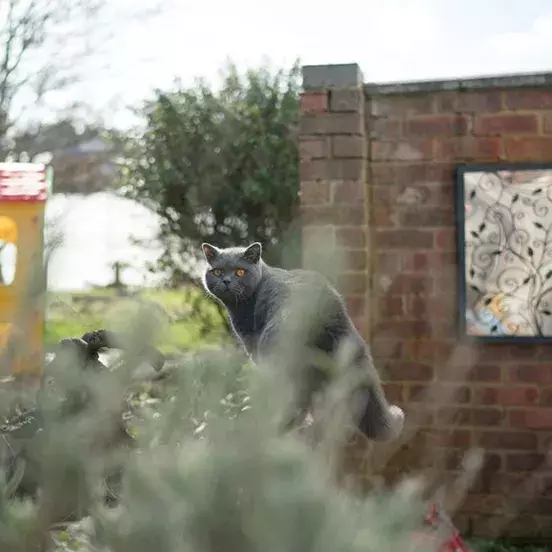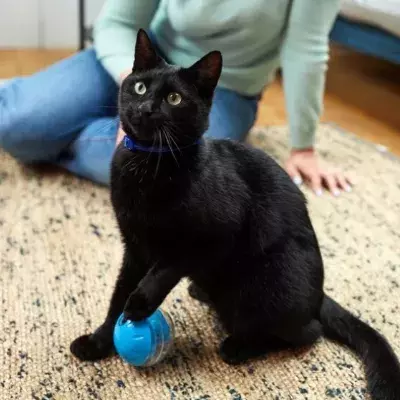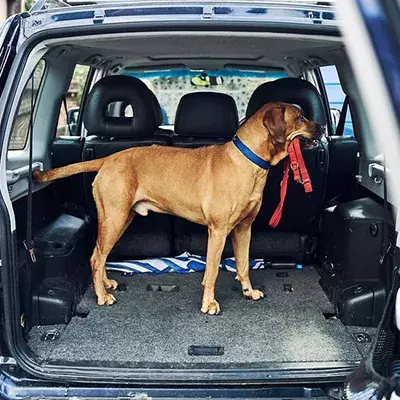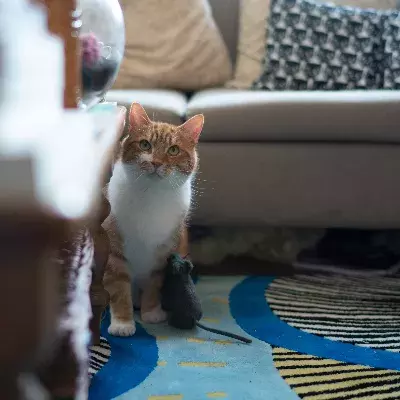From going to the vet to taking your cat to a cattery, it’s important to make sure travelling with your cat is as calm and stress-free as possible for both you and them.
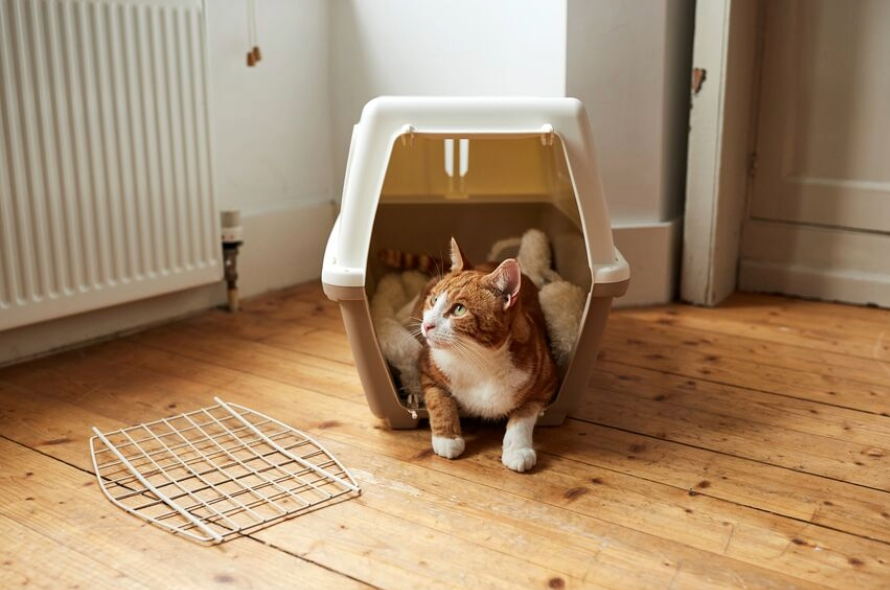
What type of carrier is best for travelling with my cat?
It’s important that your cat is both safe and comfortable when travelling in their carrier. The best types of cat carriers are those that have the following features:
- Made of a sturdy material like plastic
Plastic is the safest type of carrier for your cat to travel in over a material or cardboard one, and more comfortable for your cat than wire mesh. Carriers made of plastic are also much easier to clean. - The right size for your cat
In order to make travel comfortable for your cat, the cat carrier needs to be tall enough to allow your cat to sit, stand up, and move around, and long enough for your cat to be able to lie down comfortably. If you have a large breed of cat such as a Maine Coon, you may need to purchase an extra-large carrier. - Both front and roof opening doors on the carrier
Some cats may be easier to place into the carrier by being carefully lowered through a door in the roof, whilst others may be happier being placed in through the front door. A front door is also good for cats that will happily go into the carrier of their own accord. Having both options means you can be flexible and choose the best method to suit your cat. - The option to remove the whole top half of the carrier
This is particularly useful at the vets if your cat is nervous and doesn’t want to come out of the carrier. The top half of the carrier can be completely removed, and the cat can be left in the bottom and examined from there without having to be disturbed too much. - Sides that offer the cat privacy and concealment
This would most likely be a plastic carrier that has a solid back and sides to give the cat privacy, but also has slits in to allow ventilation. You can also use these slits to pop treats through for your cat whilst they’re inside. - Space for a warm, soft fleece or blanket at the bottom
Ideally this blanket should smell of your cat and your home so that it is familiar and reassuring to your cat when your cat is travelling in the carrier. - Make sure the carrier is clean
If the carrier was used by another cat, make sure the carrier is clean as a strong scent can be off putting - Avoid carriers with unstable bottoms
Fabric carriers may not provide secure footing and can be difficult to clean. Backpack carriers are also not recommended for cats as they can be unsettling.
View the train your cat to use a carrier transcript here
How to train your cat to use a carrier
To help your cat get used to the carrier, place treats inside to encourage exploration. For play motivated cats, engage them near the carrier with toys like a wand or feather toy.
Never force then into the carrier as the goal is to create a positive association.
Occasionally use the toy or treat to lure them inside the carrier. When your cat is comfortable resting inside, try putting the door on but leave it open, using treats to reward calm behaviour. Gradually work up to closing the door for a few seconds with your cat inside, reopening it and offering a treat.
Don’t rush this process – watch for signs of stress and if your cat seems uncomfortable, go back a few steps until they are calm.
How should I get my cat used to travelling in the carrier?
Many people make the mistake of hiding the cat carrier away and only retrieving it when the cat needs to travel to the vets or to a boarding cattery. It’s a much better idea to leave the carrier in a quiet permanent place in the house that the cat has access to, and to make it as inviting as possible. This will encourage your cat to develop positive associations with the carrier and should make travelling much less stressful.
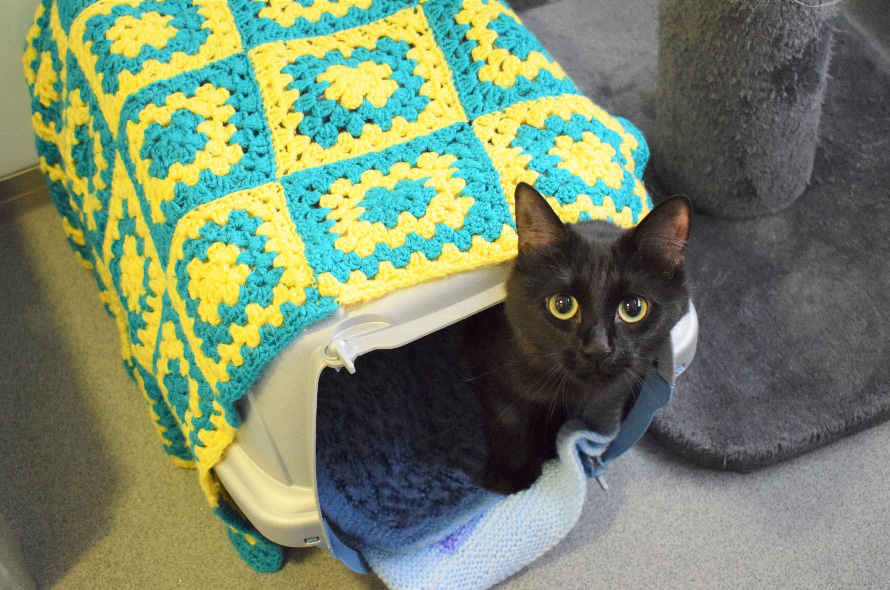
To make the carrier more inviting, place a soft fleece blanket inside and cover it with another one over the top. Take the front door off the carrier to allow your cat to go in and out when they choose. If the carrier has a detachable top, you can start by placing just the bottom half in a permanent location, and sporadically place treats inside for your cat to go in and find. You may even find that your cat starts to use the carrier as a sleeping or hiding place.
Once they are comfortable with the bottom half, add the top half for more hiding space. If you have your cat from a kitten, this is the perfect opportunity to get them used to the carrier and teach them that it is a nice place to be from the beginning.
What’s the best way to get my cat inside a carrier?
If you are not able to carry out training with your cat or need to get your cat into the carrier quickly in order to take them to the vets for example, there are several different ways of doing this. Each way aims to make the process as easy as possible, whilst also minimising your cat’s stress and protecting you from getting bitten or scratched. Your cat may be more comfortable with one method over another so see what works best for them.
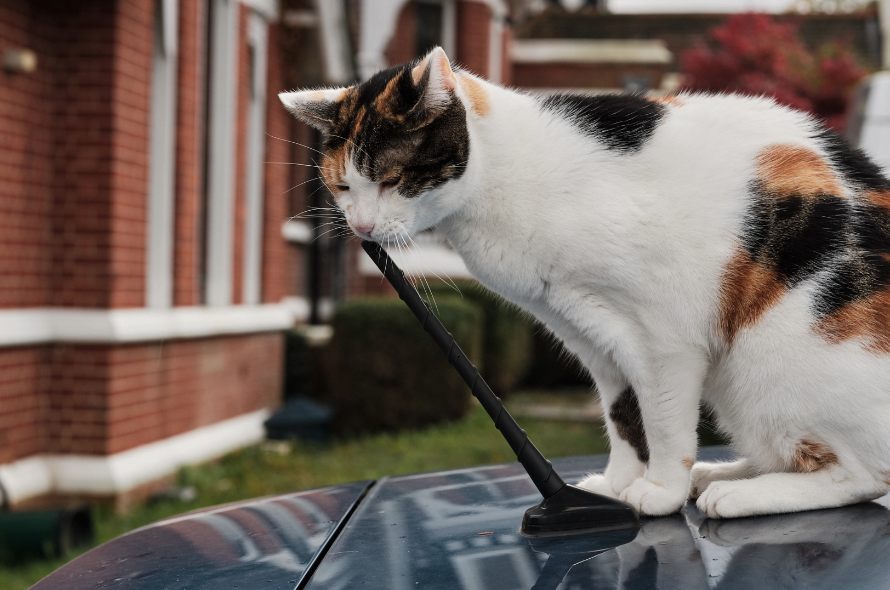
If your cat is known to struggle or get a bit panicky when handled in such a way, you could instead try wrapping them in a towel or blanket, scooping them up, and holding them firmly enough so that they can’t wriggle too much.
Then you can either place your cat through the roof (probably the easiest solution) or front door of the carrier whilst still wrapped in the blanket. You can also try gently pushing your cat inside or backing them into the carrier through the front door.
If your cat is very food motivated and comfortable entering the carrier of their own accord, it may work to simply place some of their favourite food into the back of the carrier and wait until they enter fully before closing the front door behind them.
If you have several cats, they should always be transported in their own separate carriers and should never be placed in the same one.
Even if your cats usually get on very well, being together in such a small confined space in a stressful situation will be very unpleasant for them and could lead to injuries. The cats may also form negative associations with each other long term.
How should I carry my cat when travelling?
What’s really important is that your cat feels stable while inside the carrier – if the carrier is swung around or held at an angle, it will likely be quite unpleasant and stressful for your cat as they will feel unbalanced and could even injure themselves.
- Where possible, about 30 minutes before you travel, use a few sprays of Feliway® Classic inside the carrier (this is a synthetic version of a natural pheromone cats produce to help their environment feel more familiar and reassuring to them).
- Next, place the carrier on a stable, raised surface with a blanket in the bottom and open the carrier door.
- Place one of your cat’s favourite treats on the floor near to the carrier so that when your cat goes to eat it, your cat is facing away from you and you are more or less directly behind them.
- Just before your cat finishes eating the treat, gently scoop them up from behind, using the length of your arms to support all of their weight from underneath with your hands placed around both their shoulders, at the top of each front leg. You should now have a good hold of your cat, reducing their ability to wriggle too much.
- Next, gently place your cat into the carrier, by ‘posting’ them head-first through the front door.
- If your cat is likely to struggle at this point, you could instead try placing them back end in first, or alternatively gently lowering your cat through the roof. These methods may be particularly good for cats prone to wriggling and escaping.
- When your cat is safely secured within the carrier, place a blanket or sheet over the whole of the carrier to give the cat more privacy. Many cats will find travelling in the carrier less stressful if they feel like they are more concealed.
The best thing is to carry the carrier using both arms, one on the bottom of the carrier and one around the side or top so that it can be held close to your body – this will be particularly helpful if the carrier is quite heavy once the cat is inside. Be careful not to move jerkily, and when putting the carrier down, always do so on a stable, level surface.
How should I travel with my cat?
It’s really important that whenever you travel with your cat, to always do so with your cat securely inside their carrier rather than free inside the vehicle.

Here are some other tips to help you and your cat have a journey with as little stress as possible:
- Where possible, about 15 minutes before you want to travel with your cat, spray some Feliway® Classic into the vehicle (a spray in each corner of the inside of the vehicle).
- Cats have an excellent sense of smell and may find strong smelling car air fresheners unpleasant, so it is best to remove these and ventilate the car well before travelling with your cat.
- Ensure the car is a similar temperature to your home (i.e. not very cold or very hot) which will make it more comfortable for your cat to be in.
- Ideally place the cat on a seat and wrap the seat belt around the carrier, threading it through the handle, so that it can be fastened in place. This is the best way to keep the cat carrier secure during the journey and is safest for your cat in the event of an accident.
- Many car seats are sloped, so the best way to make sure the carrier is on a level surface is to place a rolled-up towel on the seat underneath the carrier.
- Cover the carrier with a sheet or blanket to provide your cat with extra privacy and reduce how much your cat is disturbed by things going on outside.
- Try to avoid playing any loud music in the car, however, classical music played quietly may help to drown out unpleasant noises coming from outside the car such as traffic etc.
- If your cat isn’t prone to being sick when in the car and is food motivated, you can place treats though the slits in the side of the carrier every so often during the journey to distract your cat and keep them occupied.
- You can also speak in a friendly, reassuring way to your cat every so often throughout the journey.
- Try to avoid sharp turns, quick acceleration or breaking suddenly whilst driving to keep the journey as smooth and gentle for your cat as possible.
- If your cat becomes very distressed and/or unwell (i.e. vomits, urinates or defecates) during car journeys, it is a good idea to speak to your vet about this as they may be able to help.
- If you are able to choose a specific time to travel with your cat, choose less busy periods of day when there will be less traffic, and also avoid any unnecessary stop offs so that the journey will be as short as possible.
